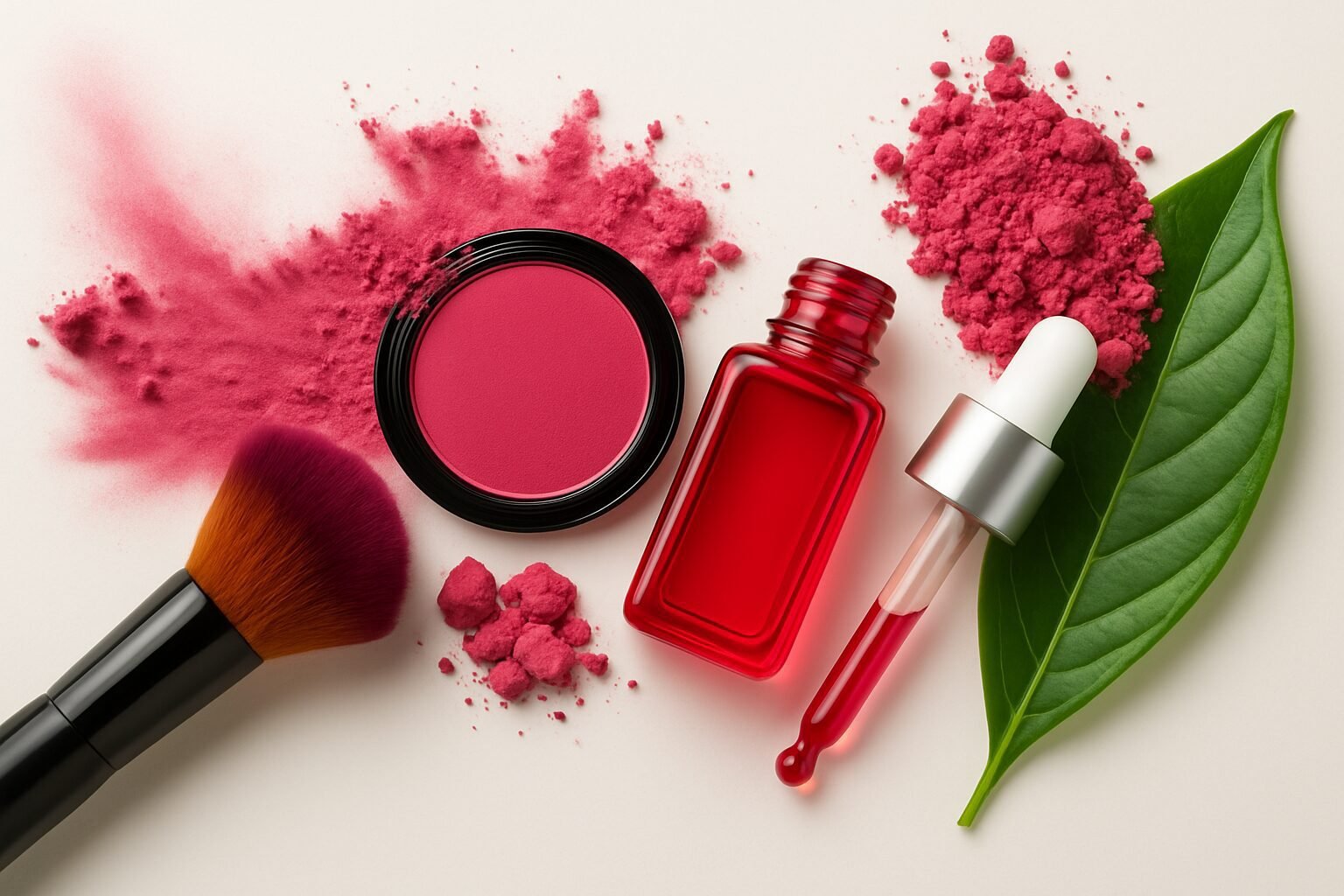The promise of exosome-based ingredients has never been greater. The cosmetic industry charges into 2025 with excitement for these powerful nanoparticles. They are central to the next generation of prestige skincare. However, this scientific excitement carries a high regulatory risk. Therefore, formulators must heed the U.S. Food and Drug Administration (FDA) classification of these materials. Indeed, this distinction is the defining factor for market viability. It becomes especially critical when differentiating between human exosomes and plant exosomes.
The FDA has made its position unequivocally clear. It has issued multiple Public Safety Notifications and many Warning Letters. In short, these actions target companies that market unapproved exosome products with therapeutic claims. Furthermore, these enforcement actions are not minor administrative hurdles. Instead, they send a stern, public signal: the FDA views human-derived exosomes intended to treat disease as unapproved new drugs and unlicensed biological products. Consequently, this blog post provides an essential compliance manual. It offers the detailed regulatory context formulators need to pivot toward safe, legally defensible ingredients. We focus particularly on sustainable plant-derived exosomes.
The Exosome Essentials: Function and Source Material
Exosomes are nanosized extracellular vesicles, typically 30–150 nm. Most cell types secrete them naturally. In fact, they are essentially nature’s messaging system. They carry a complex cargo of proteins, lipids, and functional genetic material (mRNA, miRNA). This material facilitates crucial intercellular communication. In the skin, this communication supports processes that modulate inflammation, enhance repair mechanisms, and maintain dermal matrix integrity.
Human-Derived Exosomes (H-Exos)
H-Exos usually come from stem cells (like MSCs), amniotic fluid, or conditioned media. They contain biological signals highly compatible with human physiology. But, this potency is exactly why the FDA subjects them to its most stringent regulatory oversight. As a result, claims related to these materials often trigger the FDA’s review under the Human Cells, Tissues, and Cellular and Tissue-Based Products (HCT/P) framework. Crucially, as of 2025, the FDA has not approved any exosome products for therapeutic use outside of clinical trials. Any marketing suggesting H-Exos treat, cure, or mitigate a disease will, of course, lead to immediate enforcement.
Plant-Derived Exosomes (P-Exos)
Formulators extract P-Exos from botanical sources, such as specific fruits or plant stem cell cultures. Structurally speaking, they are similar to H-Exos. However, they carry a different, non-human biological payload. Specifically, they are rich in antioxidants, vitamins, and anti-inflammatory compounds. They offer a stable, scalable, and ethically superior source for cosmetic use. Significantly, they fall outside the FDA’s HCT/P regulations, which govern only human-derived materials. Thus, this exclusion places them more firmly within the cosmetic regulatory framework. Consequently, claims must remain strictly appearance-focused to maintain compliance.
The Regulatory Hammer: FDA’s Public Safety Notification and Warning Letters
The FDA has repeatedly stressed its authority. First and foremost, it views any exosome product marketed to treat or prevent disease as a drug. Second, it may classify it as a biological product. It uses the product’s intended use to determine this classification.
Unapproved New Drugs and Unlicensed Biologicals
For human-derived exosome products, the FDA requires a Biologics License Application (BLA) or an Investigational New Drug (IND) application. This must be in effect before marketing. Keep in mind, this is required unless the product meets a specific, narrow exemption. Since the FDA has not BLA-approved any exosome product, most human-derived exosome treatments are illegal. Clinics administer these treatments outside of controlled IND clinical trials. Therefore, firms must avoid this path completely.
Case Study: Lessons from FDA Warning Letters
We reviewed FDA enforcement actions against companies marketing human-derived exosome products (e.g., Kimera Labs). Overall, the review reveals clear patterns of non-compliance:
- Therapeutic Claims: Companies promoted products to treat orthopedic conditions, joint tears, and neurodegenerative diseases. In addition, they claimed to “stimulate neuronal growth.”
- HCT/P Violations (Homologous Use): Many umbilical cord or amniotic fluid-derived products failed the “homologous use” HCT/P requirement.
- HCT/P Violations (Minimal Manipulation): Violations also occurred when tissues underwent processing that altered the original relevant characteristics.
In short, these actions send a clear message. Marketing exosome-based products with implied therapeutic benefits is a high-risk gamble. Especially with human-derived materials, the FDA is actively enforcing regulations.
The Core Distinction: Cosmetic vs. Drug Claims
A product is either a compliant cosmetic or an illegal unapproved drug. The intended use determines this difference. Furthermore, the claims a manufacturer makes establish this intended use.
The Cosmetic Sweet Spot: Appearance and Attractiveness
The Federal Food, Drug, and Cosmetic Act (FD&C Act) defines a cosmetic as a product “intended to be rubbed… for cleansing, beautifying, promoting attractiveness, or altering the appearance.”
The Regulatory Trigger: Structure/Function Claims
A drug is a product “intended for use in the diagnosis, cure, mitigation, treatment, or prevention of disease” OR “intended to affect the structure or any function of the body.” Therefore, claims that cross this line will trigger drug classification.
A Strategic Pivot: Why Plant Exosomes Are the Regulatory-Safe Choice
For cosmetic formulators, choosing the exosome source means making a critical risk assessment. Opting for plant-derived exosomes significantly mitigates exposure.
Compliance and Scalability Advantages of Plant Exosomes
- Exclusion from HCT/P Rules: Plant exosomes are not human-derived, placing them outside HCT/P regulations.
- Reduced Safety Risk: They pose no risk of transmitting human communicable diseases.
- Manufacturing Control: Cell-culture production ensures consistency and scalability.
- Consumer Acceptance: Aligns with clean beauty and natural ingredient trends.
Due Diligence for the Cosmetic Chemist
Chemists must perform meticulous due diligence. This ensures absolute compliance when formulating with any exosome-based ingredient.
- Verify Ingredient Source: Demand full transparency from your supplier.
- Review Clinical Data: Ensure all data supports only cosmetic claims.
- Strict Claim Auditing: Submit all marketing copy to a regulatory expert.
- Ingredient Naming: Ensure INCI names align with cosmetic functions.
Exploring Exosome Ingredients at Grand Ingredients
At Grand Ingredients, we commit to providing scientifically advanced ingredients. Explore the full collection in our Product Center to see how plant exosomes can transform your next formulation.
Conclusion: Compliance is the New Innovation
The cosmetic industry’s journey into exosome technology is fundamentally a lesson in regulatory compliance. The FDA’s heightened enforcement signals that the window for using human-derived exosome products in non-therapeutic settings is closing. For this reason, formulators and brand owners should focus on plant exosomes. Cosmetic chemists can lead their brands confidently into the next era of skincare innovation.







